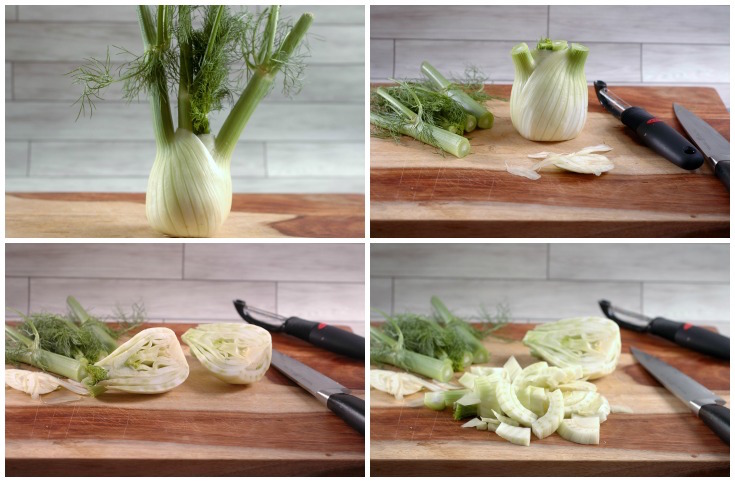
A few days ago, the Washington Post ran a story on the origin of baby carrots. Contrary to popular perception, those little orange nubs that come ready to eat in portable plastic bags aren’t juvenile versions of Bugs Bunny’s preferred snack. Baby carrots, it turns out, are actually larger carrots that have been peeled, cut and polished into two-bite chunks. Who knew?
I must admit that I’m not a fan of baby carrots. When my daughters were younger I used to buy them from time to time, usually for their lunches. But inevitably, a portion of each bag would go to waste. The stragglers would dry out and develop a kid-displeasing whitish coating. Or they would become mushy and even a little slimy, indicating spoilage.
I also think baby carrots are less flavorful than their larger cousins. I suspect this is due to the fact that growers, seeking to appeal to Americans’ potent sweet tooth, have turned to carrots whose sugar content has been boosted through selective breeding practices. The additional sugar masks other, more traditional flavors, or it displaces them altogether.

My own preference is for traditional carrots that are less sweet, since I find they have more flavor than carrots with a higher sugar content. They also tend to be less expensive (the price of baby carrots include both processing costs and a convenience premium) and slightly more nutritious (baby carrots lose nutrients during processing).
Of course, if the only way to get your kids to eat carrots is by offering them the baby variety, then I’m not opposed. When it comes to helping kids develop a liking for any fruit or vegetable, the perfect should never be the enemy of the good.


But that said, why not use your kids’ preference for baby carrots as an opportunity to convince them to try a different version of their favorite vision loving vegetable, a warming soup for example? And I have the perfect recipe. It’s a pureed soup made with carrots, which your kids will like, but that has been made a little more sophisticated with the addition of fennel, which the adults will like.
In case you’re not familiar with fennel, it’s a root vegetable that is often associated with Mediterranean cooking. It has a white bulb-like base out of which spring a handful of hollow green stalks. The stalks themselves are topped with feathery fronds that resemble dill. Most people use just the base, although the fronds can be saved for garnishing. The stalks are usually discarded.



In its raw form, fennel has the pungent aroma and mild taste of licorice, a trait some people love and others don’t. If you’re in the latter category, don’t worry. Cooking fennel softens both its aroma and flavor, allowing them to merge with, and enhance, other flavors. I find that carrot soup that includes some fennel still tastes like carrots but with a rounder, more complex flavor. Fortunately, kids don’t seem to notice it.
Most importantly, the combination of carrots and fennel provide a one-two punch in terms of nutrition. Carrots, of course, contain ample amounts of beta carotene, which our bodies convert to vitamin A or use as an antioxidant. Fennel contains a large amount of vitamin C (although some of this is lost in cooking), numerous other vitamins and minerals such as potassium and folate, and several antioxidants. Both are great sources of fiber.
Of course, none of this nutrition stuff matters if your kids decline to eat your soup. But I don’t think that will happen. Just tell them it’s the grown up version of their favorite vegetable, baby carrots.

Carrot and Fennel Soup
Ingredients
1 pound (450 grams) of carrots, peeled and roughly chopped into 1-inch pieces
1 large (about 12 ounces or 340 grams) fennel bulb, trimmed and roughly chopped into 1-inch pieces*
1/2 large (about 5 ounces or 145 grams) onion, roughly chopped into 1-inch pieces
2 tablespoons olive oil
1 teaspoon salt, divided
4 cups (32 ounces or 946 milliliters) chicken stock, preferably low-sodium
1/2 cup (125 milliliters) half and half
store-bought croutons for garnishing if desired
Directions
1. Cook the vegetables. Heat the olive oil in a medium saucepot over moderate heat. Add the onions and 1/2 teaspoon of salt and cook gently (without browning) for 5 minutes. Add the chopped carrots and fennel to the pot and cook gently (without browning) for 10 more minutes. Add the chicken stock and remaining 1/2 teaspoon of salt to the pot. Bring to a boil, and then immediately reduce the heat and simmer until the vegetables are very tender, about 30 minutes.
2. Puree the vegetables. After the vegetables have finished cooking, turn off the heat and allow the soup to cool for at least 15 minutes, stirring occasionally to release some of the heat. Using either an immersion blender or a countertop blender, puree the soup, in batches if necessary, until it is very smooth and creamy. Return the pureed soup to the saucepot (if using a countertop blender), and then slowly stir in the half-and-half. If the soup has become too cool to serve, reheat it just until it begins to simmer. Serve immediately, garnished with croutons if desired.
*To prepare the fennel, first slice a thin layer off of the bottom of the bulb, and then, while holding on to one or two of the outer stalks, peel off the bruised outer leaves of the bulb. Alternatively, if there is only light bruising on its outer leaves, use a knife or vegetable peeler to remove the bruised portions. Cut the remaining stalks with their feathery fronds from the bulb. Discard everything but the trimmed bulb. (You can save some of the fronds for garnishing the soup if you like.) Now, slice the bulb vertically in half, slice each half into quarters, and then roughly chop each quarter into pieces. Use the pieces quickly to prevent them from discoloring.
Copyright© A Busy Mom’s Kitchen
https://abusymomskitchen.com/2016/01/24/carrot-and-fennel-soup/


